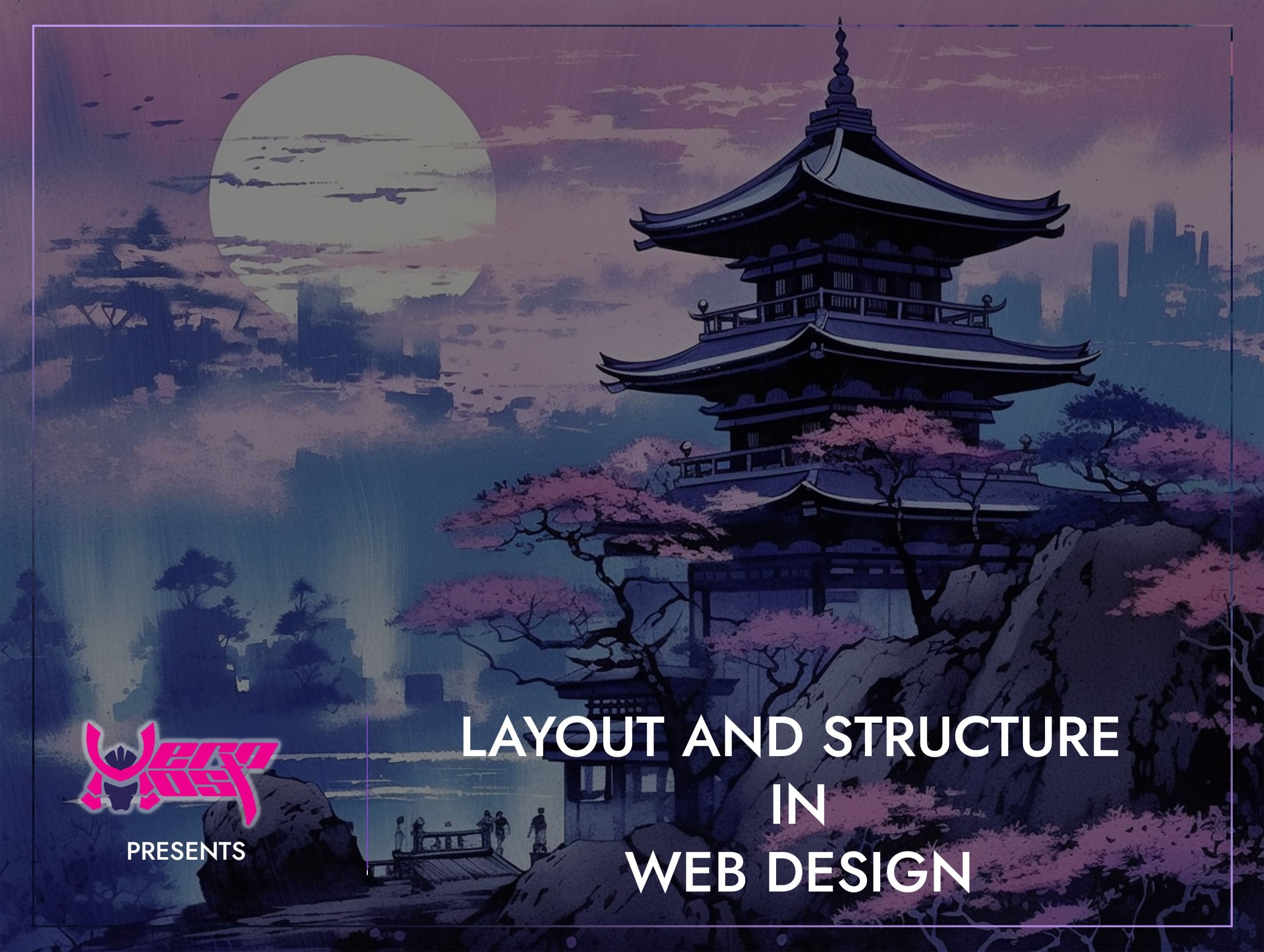Layout and Structure in Web Design
- Home
- Web Design
- Layout and Structure in Web Design

- Mikey Ryu
- May 21, 2024
- 0
Layout and Structure in Web Design
In the vast and ever-evolving field of web design, the layout and structure are fundamental elements that dictate not only the aesthetic appeal of a website but also its functionality and user accessibility. A well-thought-out layout ensures that a website is intuitive and easy to navigate, thereby enhancing the user experience and increasing the likelihood of return visits. This blog delves into the essential aspects of layout and structure in web design, offering insights on how to optimise the arrangement of visual elements to create cohesive, user-friendly interfaces.
Understanding Layout in Web Design
The layout refers to the arrangement of elements on a webpage. It’s how text, images, and sections are organised and aligned to guide the user through the content in a logical, seamless manner. The choice of layout can profoundly influence how information is perceived and interacted with by users. Here are some key components that play a vital role in effective web design layouts:
Grid Systems
Grid systems are a foundational tool for creating balanced and harmonious web designs. They provide a framework that aligns elements in a consistent, organised manner across different pages. Grids help designers maintain a structured aesthetic while adapting content to various device screens, ensuring that the design remains responsive and visually appealing regardless of the viewing platform.
Visual Hierarchy
Visual hierarchy is the principle of arranging elements to signal their importance to the viewer. It influences the order in which the human eye perceives what it sees. By manipulating the size, colour, contrast, placement, and other attributes, designers can guide the user’s attention to key sections of the webpage, such as calls to action and crucial information, thereby improving user experience and engagement.
F-Shaped Pattern
Research on eye-tracking has revealed that people typically scan computer screens in an “F” pattern. This means that most users look at a page horizontally from left to right at the top, then move down the page and repeat the process a few times. Understanding this pattern can significantly impact how a designer chooses to layout content, ensuring that the most important information catches the user’s attention first.
Importance of Responsive Design
Responsive design is a crucial component of modern web design. It ensures that a website’s layout adjusts smoothly across different screen sizes and devices, such as desktops, tablets, and smartphones. The layout must fluidly respond to different environments to provide an optimal viewing experience, easy reading, and navigation with a minimum of resising, panning, and scrolling.
Practical Tips for Effective Web Layouts
Here are some practical tips for designing effective web layouts that can enhance usability and user satisfaction:
Keep It Simple:
Simplicity is key in web design. A clean, uncluttered layout helps users find what they need quickly and easily. Avoid excessive use of fonts, colours, and animated elements that can distract from the main content.
Consistency Is Crucial:
Consistent design across all pages reduces the learning curve for users and enhances their overall experience. Maintain the same colour schemes, typography, and navigation throughout the site.
Prioritise Navigation:
Navigation should be intuitive and straightforward. Good navigation helps users find information quickly and enhances their ability to understand where they are within your website. Consider using sticky headers, breadcrumbs, or a fixed navigation bar.
Optimise for Accessibility:
Ensure your layouts are accessible by designing for various users, including those with disabilities. This means incorporating features like keyboard navigation and ensuring that all interactive elements are accessible through assistive technologies.
Conclusion
The layout and structure are more than just the backbone of a website’s design; they are critical to creating effective, engaging, and accessible digital experiences. By mastering the art of arranging visual elements in a functional and aesthetically pleasing manner, designers can significantly improve the usability and effectiveness of a website. Whether you’re building a personal project or a commercial platform, these principles of layout and structure are essential tools in the arsenal of any successful web designer.
Search
Categorys
- Branding (12)
- Business Growth Guides (3)
- Business Insights (3)
- Content Marketing (43)
- Domain Authority (19)
- Email Marketing (28)
- Google Analytics & Search Console (5)
- Hack or Not (2)
- Hero Host News (0)
- Inbound Marketing (32)
- Lessons From Asia (40)
- Marketing Guides (11)
- Martial Arts Journey (14)
- Outbound Marketing (8)
- Search Engine Optimisation (SEO) (41)
- Social Media Marketing (38)
- Web Design (20)
- Website Hosting (4)
- Wordpress (2)






